
Nuclear Materials and Energy
Scope & Guideline
Unlocking the Potential of Nuclear Materials and Energy
Introduction
Aims and Scopes
- Materials Behavior Under Irradiation:
This area emphasizes the study of how various materials, particularly tungsten and ferritic/martensitic steels, respond to neutron and ion irradiation, including the resulting mechanical properties, defect evolution, and retention of hydrogen isotopes. - Plasma-Facing Materials:
Research focuses on the performance and integrity of materials that interact directly with plasma in fusion devices, including the analysis of erosion, retention, and the impact of impurities on these materials. - Advanced Manufacturing Techniques:
The journal covers innovative approaches to material fabrication, such as additive manufacturing and novel sintering processes, aimed at enhancing the performance of materials used in nuclear applications. - Modeling and Simulation:
A significant focus on computational methods, including first-principles calculations and multiphysics modeling, to predict material behavior under various conditions and to assist in the design of nuclear systems. - Hydrogen and Tritium Management:
Investigations into the transport, retention, and permeation of hydrogen and tritium in materials, which are critical for the safety and efficiency of fusion reactors. - Thermal and Mechanical Analysis:
Studies related to the thermal-hydraulic performance and mechanical integrity of nuclear reactor components, including assessments of heat flux handling and structural resilience under operational stresses.
Trending and Emerging
- Innovations in Tritium Breeding Materials:
Recent studies emphasize the development of advanced materials for tritium breeding, reflecting a growing interest in improving the efficiency and safety of fusion reactors. - Advanced Coatings and Surface Treatments:
Research on novel coatings and treatments for enhancing the performance of plasma-facing materials is gaining traction, showcasing the need for improved durability and resistance to plasma-induced damage. - High-Entropy Alloys and Novel Materials:
The exploration of high-entropy alloys and other innovative material compositions is trending, driven by the search for materials that can withstand extreme conditions in nuclear environments. - Machine Learning and AI Applications:
The integration of machine learning and artificial intelligence in predicting material behavior and optimizing processes is emerging as a significant trend, reflecting the industry's move towards data-driven research. - Sustainability and Recycling in Nuclear Materials:
Research focused on the sustainability of nuclear materials, including recycling and waste management strategies, is becoming increasingly relevant as the field seeks to minimize its environmental impact.
Declining or Waning
- Conventional Nuclear Fuel Studies:
Research on traditional nuclear fuel behavior has decreased as focus shifts towards advanced fuels and materials that enhance safety and efficiency in nuclear reactors. - Low-Temperature Materials Characterization:
Investigations into material behavior at low temperatures have diminished as the emphasis has moved towards high-temperature applications relevant to fusion reactors. - Basic Radiochemistry:
Studies centered on fundamental radiochemistry principles are less frequently published, possibly due to a shift towards more applied research in material science and engineering. - Historical Materials Analysis:
Research focusing on the historical performance of materials in older reactor designs is declining, as newer materials and designs take precedence in current research. - Non-Plasma Related Materials Research:
Topics that do not directly relate to plasma-facing materials or fusion applications have waned, reflecting a concentrated focus on fusion technology and its immediate materials needs.
Similar Journals
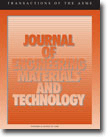
JOURNAL OF ENGINEERING MATERIALS AND TECHNOLOGY-TRANSACTIONS OF THE ASME
Connecting researchers and practitioners in the realm of engineering innovation.JOURNAL OF ENGINEERING MATERIALS AND TECHNOLOGY-TRANSACTIONS OF THE ASME is a premier journal published by the American Society of Mechanical Engineers (ASME), dedicated to advancing the field of engineering materials and technology. With an ISSN of 0094-4289 and E-ISSN 1528-8889, this journal has provided invaluable insights since its inception in 1973. Operating from its headquarters in New York, United States, it serves a global audience of researchers, professionals, and students alike. The journal is recognized for its rigorous peer-review process and its commitment to disseminating high-quality research, currently holding a Q3 quartile ranking across multiple categories including Condensed Matter Physics, Materials Science, Mechanical Engineering, and Mechanics of Materials. With a focus on exploring innovative materials and their applications, it aims to foster collaboration and discovery in the engineering community. Although it is not an open-access journal, it continues to play a vital role in shaping the future of engineering materials research up to 2024. Researchers and practitioners will find in this journal a significant platform to support the development and understanding of engineering materials, making contributions that resonate through academia and industry.

Plasma and Fusion Research
Advancing Knowledge in Plasma Science and Energy SolutionsPlasma and Fusion Research is a pivotal journal within the realm of plasma science and nuclear fusion, published by the Japan Society of Plasma Science and Nuclear Fusion Research. With an ISSN of 1880-6821, this journal serves as a vital platform for disseminating significant research findings and advancements from Japan and around the globe. Operating since 2006, it has steadily contributed to the field, reflected in its recognition as a Q3 journal in Condensed Matter Physics for the year 2023 and its ranking of #383 out of 434 in the Scopus categories, placing it in the 11th percentile. Although it currently does not offer open access, the journal's commitment to quality research makes it essential reading for researchers, professionals, and students keen on exploring the complexities of plasma dynamics, fusion technology, and their applications in energy production. Situated in Nagoya, Japan, the journal fosters a collaborative environment aimed at pushing the boundaries of knowledge in plasma physics and enhancing the understanding of fusion processes.
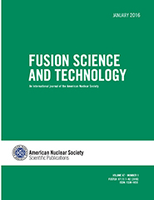
FUSION SCIENCE AND TECHNOLOGY
Empowering researchers to illuminate the path of nuclear advancement.FUSION SCIENCE AND TECHNOLOGY is a leading peer-reviewed journal published by Taylor & Francis Inc., dedicated to the advancement of knowledge in the fields of nuclear science, engineering, and fusion technology. With an impact factor that reflects its growing significance, this journal provides a platform for innovative research that addresses the challenges and opportunities within Civil and Structural Engineering, Materials Science, Mechanical Engineering, and Nuclear Energy and Engineering. Its open access option facilitates wider dissemination of groundbreaking research, enhancing visibility and accessibility for researchers, professionals, and students alike. As a member of the Q2 and Q3 Quartiles across various categories—demonstrating its reputable standing among peers—the journal plays a crucial role in fostering collaboration and sharing the latest scientific discoveries in fusion and related technologies from 2001 until 2024. This makes it an essential resource for anyone engaged in the multidisciplinary aspects of fusion science, contributing to the development of sustainable energy solutions.

JOURNAL OF FUSION ENERGY
Transforming theories into practical applications in energy science.The Journal of Fusion Energy, published by Springer, stands as a significant platform for advancing the field of nuclear energy and high-energy physics. With an ISSN of 0164-0313 and an E-ISSN of 1572-9591, this journal has been pivotal for researchers since its inception, tracking the latest innovations and research breakthroughs from 1981 to 1983 and continuing its legacy from 1985 to 2024. Recognized as a Q2 journal in both the Nuclear and High Energy Physics and Nuclear Energy and Engineering categories for 2023, it boasts a respectable Scopus ranking that places it among the top journals in its field—ranking #37 out of 77 in Nuclear Energy and Engineering and #50 out of 87 in Physics and Astronomy. Although it does not offer open access options, the journal remains a crucial resource for professionals, researchers, and students striving to stay informed on the pivotal developments in fusion energy research. Its comprehensive articles are designed to engage the academic community, paving the way for new paradigms in energy production and sustainability.
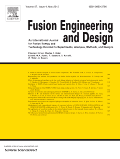
FUSION ENGINEERING AND DESIGN
Elevating Fusion Engineering Through Collaborative Research.FUSION ENGINEERING AND DESIGN is a premier scientific journal published by Elsevier Science SA, dedicated to advancing the field of fusion engineering, materials science, and related disciplines. Established in 1985 and running through 2024, this journal features cutting-edge research that spans multiple categories, including Civil and Structural Engineering, Mechanical Engineering, Materials Science, and Nuclear Energy and Engineering, holding a notable Q2 quartile ranking in each field as of 2023. Catering to a global audience of researchers and professionals, FUSION ENGINEERING AND DESIGN emphasizes the importance of interdisciplinary collaboration and innovative technology in tackling the complex challenges associated with fusion energy. Although it does not offer Open Access, the journal remains an essential resource for those seeking to stay abreast of developments that could shape the future of energy solutions and engineering methodologies. With a dedicated editorial board and a commitment to high-impact publication, this journal serves as a vital platform for disseminating transformative ideas and driving forward the scientific dialogue in fusion engineering.
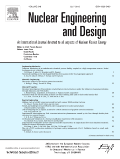
NUCLEAR ENGINEERING AND DESIGN
Exploring the Frontiers of Nuclear Engineering ExcellenceNUCLEAR ENGINEERING AND DESIGN is a prestigious journal published by Elsevier Science SA, which has been contributing to the field of nuclear science since 1965. With ISSN 0029-5493 and E-ISSN 1872-759X, it serves as a vital platform for researchers, professionals, and students in areas including nuclear energy, safety, mechanical engineering, and waste management. This journal is highly regarded, reflected in its impressive Q1 status in categories such as Nuclear Energy and Engineering and Safety, Risk, Reliability and Quality, as well as its ranking within the top quartiles of other related fields according to the 2023 category quartiles. Though not an open-access journal, it provides comprehensive insights into cutting-edge research and innovative practices in nuclear engineering, making it an essential resource for advancing knowledge and applications in this critical sector. With a forward-looking scope extending to 2024, NUCLEAR ENGINEERING AND DESIGN continues to influence developments in nuclear technology and safety protocols worldwide.

NUCLEAR INSTRUMENTS & METHODS IN PHYSICS RESEARCH SECTION B-BEAM INTERACTIONS WITH MATERIALS AND ATOMS
Illuminating the Path of Beam-Material InteractionsNUCLEAR INSTRUMENTS & METHODS IN PHYSICS RESEARCH SECTION B-BEAM INTERACTIONS WITH MATERIALS AND ATOMS, published by Elsevier, is a pivotal journal in the fields of nuclear and high energy physics as well as instrumentation. With an ISSN of 0168-583X and an E-ISSN of 1872-9584, this journal has been a significant contributor to the scientific community since its inception in 1983. Covering an extensive range of topics related to beam interactions with various materials and atoms, the journal serves as an essential resource for researchers, professionals, and students alike. It holds a respectable Q3 category ranking in both instrumentation and nuclear high energy physics as of 2023, indicating its relevance and quality within these domains. While the journal currently does not offer open access options, its invaluable findings are accessible through numerous academic libraries and institutions. With the publication's emphasis on fostering advancements in experimental techniques, instrumentation developments, and theoretical insights, it undoubtedly plays a crucial role in the ongoing progress and innovation in the field.
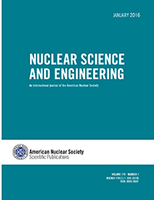
NUCLEAR SCIENCE AND ENGINEERING
Advancing the Frontiers of Nuclear InnovationNUCLEAR SCIENCE AND ENGINEERING, published by Taylor & Francis Inc, is a leading journal in the field of nuclear energy and engineering, providing a vital platform for disseminating cutting-edge research and advancements from both academia and industry. With an ISSN of 0029-5639 and an E-ISSN of 1943-748X, the journal boasts a notable impact factor and is categorized in the Q2 quartile for 2023, reflecting its influence and quality in the field. Covering a comprehensive scope from the inception of nuclear technology in 1969 to contemporary advancements forecasted for 2024, it ranks #38 out of 77 in the Scopus Energy – Nuclear Energy and Engineering category, placing it in the 51st percentile. Although the journal is not open access, it remains essential for researchers, professionals, and students seeking to stay abreast of the latest developments and innovations in nuclear science. Located in the heart of Philadelphia, NUCLEAR SCIENCE AND ENGINEERING contributes significantly to the advancement of nuclear engineering knowledge and practice, making it a crucial resource for anyone involved in this dynamic field.
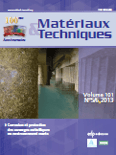
Materiaux & Techniques
Innovating the Future of Materials with Peer-Reviewed InsightsMateriaux & Techniques, published by EDP SCIENCES S A, is a prominent journal in the field of materials science, specifically focusing on diverse and innovative techniques in material development and application. With an ISSN of 0032-6895 and an E-ISSN of 1778-3771, this French journal serves as a key resource for researchers and professionals looking to advance their knowledge and share their findings within the community. The journal holds a Q3 ranking in Materials Science (miscellaneous), indicating its role in contributing to various facets of material science research amidst a growing field. Despite operating under a traditional access model, it provides a platform for rigorous peer-reviewed studies and significant advancements in material technology. With a publication history tracing back to the late 1970s and extending through to 2024, Materiaux & Techniques continues to uphold its commitment to fostering high-quality discourse and innovation in materials science.
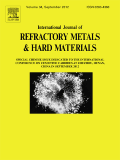
INTERNATIONAL JOURNAL OF REFRACTORY METALS & HARD MATERIALS
Uncovering the potential of refractory materials in technology.INTERNATIONAL JOURNAL OF REFRACTORY METALS & HARD MATERIALS, an esteemed publication by Elsevier Science Ltd, stands at the forefront of materials research, focusing on the development and application of refractory metals and hard materials in various engineering fields. With an impressive impact factor and recognition as a Q1 journal across several categories including Ceramics and Composites, Materials Chemistry, and Mechanical Engineering, it serves as a vital resource for researchers, professionals, and students alike. The journal has been continuously publishing high-quality research since its inception in 1982, with a convergence of developments spanning through to 2024. Its Scopus rankings further emphasize its significance, boasting ranks in the top percentiles of relevant scientific fields. Although it operates under a subscription model, the depth and rigor of the research published within its pages ensures that it remains an invaluable tool for those pursuing innovation and exploration in materials science.